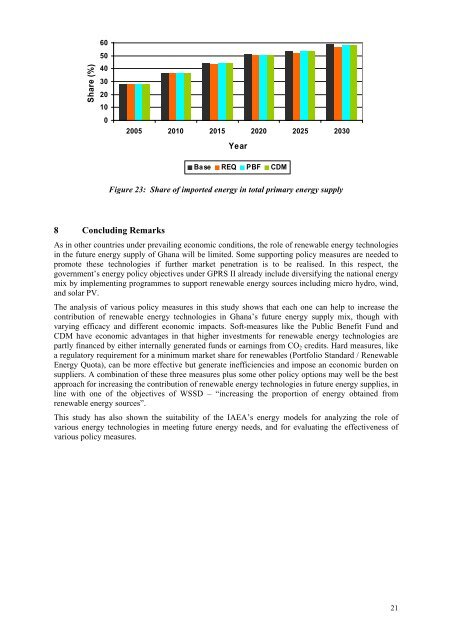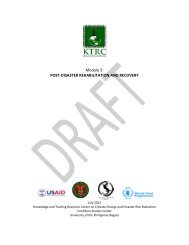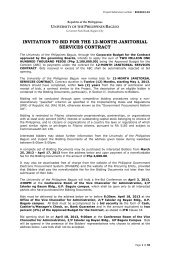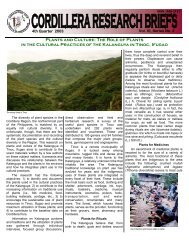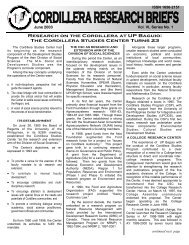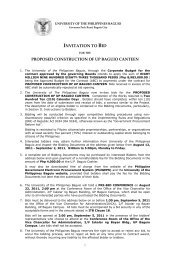Ghana - UNEP
Ghana - UNEP
Ghana - UNEP
- No tags were found...
You also want an ePaper? Increase the reach of your titles
YUMPU automatically turns print PDFs into web optimized ePapers that Google loves.
Share (%)60504030201002005 2010 2015 2020 2025 2030YearBase REQ PBF CDMFigure 23: Share of imported energy in total primary energy supply8 Concluding RemarksAs in other countries under prevailing economic conditions, the role of renewable energy technologiesin the future energy supply of <strong>Ghana</strong> will be limited. Some supporting policy measures are needed topromote these technologies if further market penetration is to be realised. In this respect, thegovernment’s energy policy objectives under GPRS II already include diversifying the national energymix by implementing programmes to support renewable energy sources including micro hydro, wind,and solar PV.The analysis of various policy measures in this study shows that each one can help to increase thecontribution of renewable energy technologies in <strong>Ghana</strong>’s future energy supply mix, though withvarying efficacy and different economic impacts. Soft-measures like the Public Benefit Fund andCDM have economic advantages in that higher investments for renewable energy technologies arepartly financed by either internally generated funds or earnings from CO 2 credits. Hard measures, likea regulatory requirement for a minimum market share for renewables (Portfolio Standard / RenewableEnergy Quota), can be more effective but generate inefficiencies and impose an economic burden onsuppliers. A combination of these three measures plus some other policy options may well be the bestapproach for increasing the contribution of renewable energy technologies in future energy supplies, inline with one of the objectives of WSSD – “increasing the proportion of energy obtained fromrenewable energy sources”.This study has also shown the suitability of the IAEA’s energy models for analyzing the role ofvarious energy technologies in meeting future energy needs, and for evaluating the effectiveness ofvarious policy measures.21


